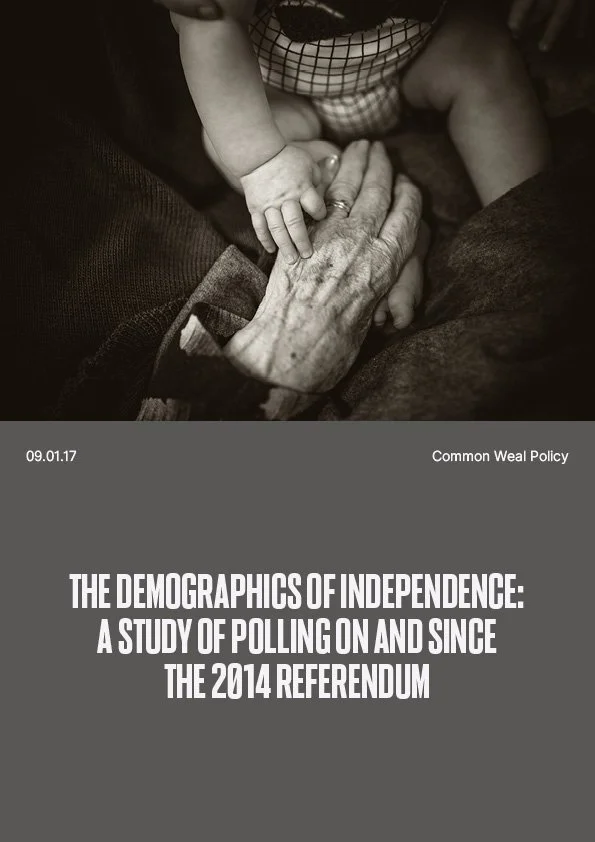The Demographics of Independence: A study of polling on and since the 2014 referendum
Policy Paper
Credits — Dr Craig Dalzell
Overview
This paper investigates many of the polls published since September 2014 in an attempt to draw out trends which other reporting may have passed over. Through this, the independence movement may be better able to understand how the “materially changed” circumstances which have triggered the upcoming independence campaign may have also affected voters intentions and preferences. By better understanding the current priorities and preferences of voters, it will be easier to build a new independence campaign which specifically targets those voters who need to be convinced or re-convinced of the merits of independence
Despite regular polling before, during and after the 2014 Scottish independence referendum there appears to have been little analysis of which segments of Scotland’s society voted in a particular way. Less still has been conducted in the time since with most of the headlines and attention given over to not much more than the overall Yes/No split.
Key Points
As of January 2017, the overall headline Yes/No poll lies at roughly the same as it was at the time of the first independence referendum in September 2014. Approximately 45% Yes, 55% No.
Age remains a very strong correlator of voting intention. Voters aged 16-41 are more likely than not to vote Yes whereas voters above 41 are more likely to vote No.
The median age of Scotland’s voting population is 48implying that there may exist a “natural majority�? for No based solely on age.
A significant rural/urban split has been identified. Council areas with a higher population density were significantly more likely to vote Yes than council areas with lower population density.
There was a general trend of increasing voter turnout correlated with age although the then newly enfranchised 16-17 year old voters were particularly motivated to take up their first ever opportunity to vote.
Since 2014 there has been a steady decline in support for independence amongst SNP voters, particularly since “Brexit”. This decline has been largely counterbalanced by an increase in support amongst Labour, Liberal Democrat and (marginally) Conservative voters.
Since 2014 there has been a steady decline in support for independence among voters within the C2DE social grades. The ABC1 social bracket has been largely static.
That said, the ABC1 bracket saw a significant “bounce” in support around the time of the EU referendum but this has proven short lived and has since decayed away.
Gender and age will prove important. Voters of both genders who are aged 16 to 25 years old display a consistent increasingly pro-independence trend. Males aged 25-55 are trending slightly downwards whereas the trend in males aged 55+ is static.
Since the Brexit vote, support for independence amongst females aged 55+ has fallen precipitously from 37% to 22%. All other female age groups show a rising trend in support for independence.
Given the disparate nature of the various segments of the Scottish voting population an independence campaign based on targeting any one group or based on the political ideology of any one party would be highly unlikely to succeed.


